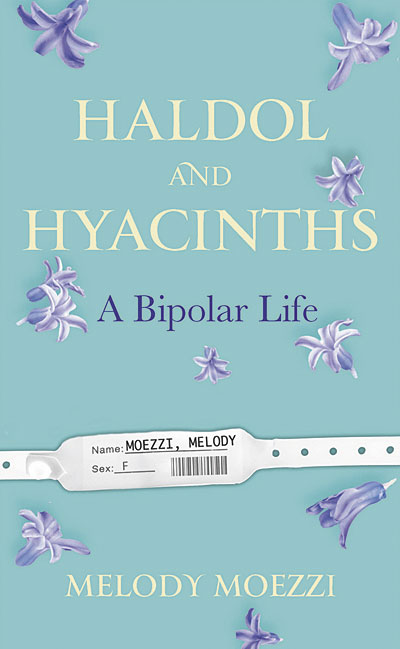One of Melody Moezzi’s biggest gripes about being bipolar is that nobody rewards it. “If you have cancer, you get flowers, visitors and compassion. If you have a mental illness, you get plastic utensils, isolation and fear. If you survive cancer, people consider you a hero and inspiration, and they tell you so.” What’s more, the mentally ill have no champions: “We have no especially loud and high-profile advocates. No Michael J. Fox, no Christopher Reeve, no Lance Armstrong. No pink boas or bracelets or ribbons or T-shirts.” They do now. Consider Moezzi’s new book, “Haldol and Hyacinths,” the crazy, colorful rubber wristband for bipolar sufferers everywhere.
Blistering, brash and irreverent, Moezzi lays out the years she spent suffering from a combination of mania and depression that she describes as “so delusional and ecstatic that it tricks you into believing you can leap tall buildings in a single bound, or so depressed and hopeless that it has you begging gravity to work its morbid magic.” Moezzi, an Iranian-American writer, attorney and activist now living in Raleigh, N.C., is a spokeswoman for a variety of issues, particularly those relating to mental health and human rights. Parts of her memoir have appeared in various articles for Bipolar Magazine, the website of the National Alliance on Mental Illness, CNN and other media outlets.
Although much of the memoir takes place in crisis centers and mental hospitals, this is “A Bipolar Life,” not just Iranian-American “Girl, Interrupted.” Moezzi describes her childhood, adolescence, college years — including Emory law school — and marriage, and the many frustrating attempts made over the years to nail down the exact nature of her mental illness: Bipolar I, the most severe form of the disease. In search of its origins, Moezzi sifts through various possibilities, beginning with the end to her parents’ comfortable life in Ohio when revolution in Iran resulted in their expulsion from the U.S.
Though she was born in Chicago in 1979, the nomadic life she was exposed to before returning to America in the early ’80s guaranteed Moezzi “a dual existence from the start.” The euphoria she felt during a summer in Glacier Park, Mont., now appears to have been a case of hypomania, a mild version of what would develop, within 10 years, into full-blown mania, a classic indicator of her disorder. Depression took its toll as well.
At its worst, Moezzi compares its emotional effects to “white phosphorous,” the chemical used on Iranians by Saddam Hussein during the Iraq-Iran war, which caused “blisters, burns, smoke inhalation, death.” But the biggest battle — and obstacle to getting treated — says Moezzi, was her failure to accept bipolar disorder as an illness at all. If her family and husband hadn’t observed her carefully and kept notes, which Moezzi calls her “souvenirs from hell,” she would not have distinguished her “delusions of grandeur” from reality.
“The thing about being crazy is that you don’t feel crazy. You need no explanation for anything you’re thinking, feeling or doing. It all seems perfectly sane, ingenious even. I really believed that I had singlehandedly discovered the secret to life, that I had all the most important answers. And more than anything, I really believed that nothing I was doing was remotely irrational.”
Moezzi frequently suggests that craziness is tantamount to brilliance, with sanity running a dull second, and that her disorder has positive applications: “If it means you have to be a little crazy and delusional to reach your dreams, so be it. After all, delusions aren’t really delusions if you realize them.”
Moezzi has said that although she’s hardly “the quiet type,” this was not a story she was eager to share. “I didn’t particularly want to put all my crazy out there for the world to see and judge. I didn’t particularly want to relive all that trauma and madness.”
Send questions/comments to the editors.



Success. Please wait for the page to reload. If the page does not reload within 5 seconds, please refresh the page.
Enter your email and password to access comments.
Hi, to comment on stories you must . This profile is in addition to your subscription and website login.
Already have a commenting profile? .
Invalid username/password.
Please check your email to confirm and complete your registration.
Only subscribers are eligible to post comments. Please subscribe or login first for digital access. Here’s why.
Use the form below to reset your password. When you've submitted your account email, we will send an email with a reset code.